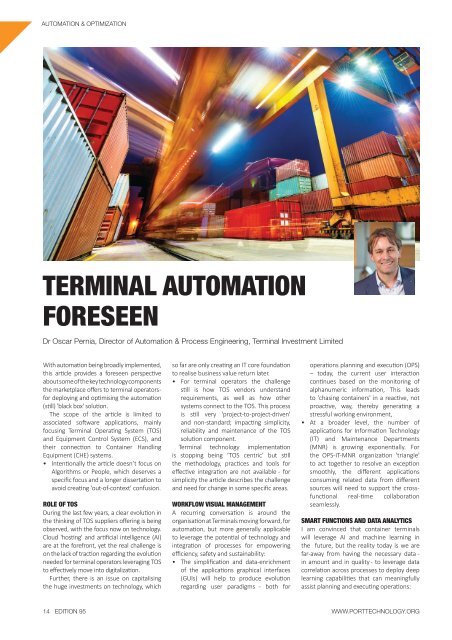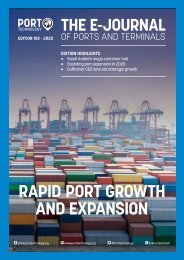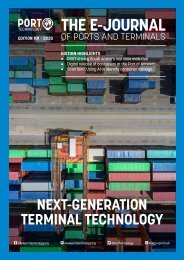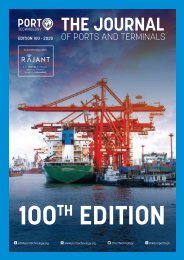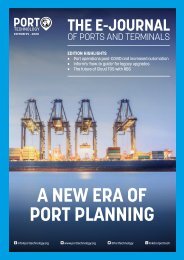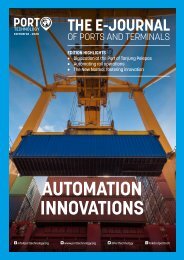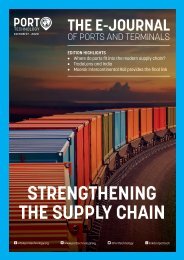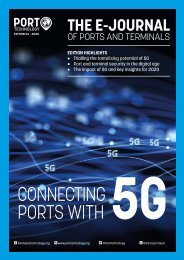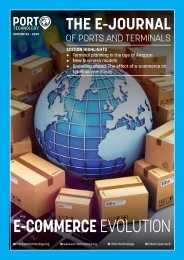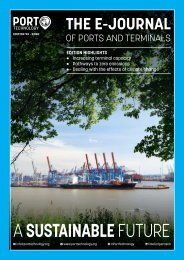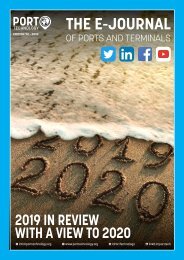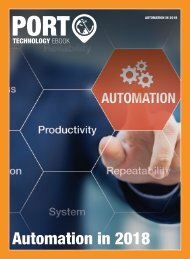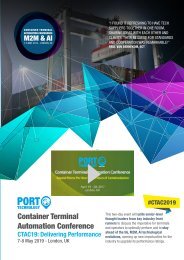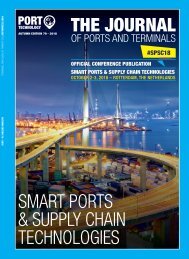Automation's Next Step
This edition of The Journal considers automation of container terminals and how the industry is delivering the next steps towards full and semi-automation. With the inclusion of over 30 technical papers The Journal also explores terminal planning in the age of automation, environmental sustainability for ports, the impact of mega ships and other topics. Automation continues to drive innovation across several industries, and there is no greater example of this than maritime. However, implementation, technology and best practices continue to be a constant source of debate and analysis across the sector, as is shown in this edition of the PTI Journal. The automation debate is not new, but it remains a booming market and a source of growth for the wider container terminal industry. One thing is for certain, automation is here to stay.
This edition of The Journal considers automation of container terminals and how the industry is delivering the next steps towards full and semi-automation.
With the inclusion of over 30 technical papers The Journal also explores terminal planning in the age of automation, environmental sustainability for ports, the impact of mega ships and other topics.
Automation continues to drive innovation across several industries, and there is no greater example of this than maritime.
However, implementation, technology and best practices continue to be a constant source of debate and analysis across the sector, as is shown in this edition of the PTI Journal.
The automation debate is not new, but it remains a booming market and a source of growth for the wider container terminal industry.
One thing is for certain, automation is here to stay.
You also want an ePaper? Increase the reach of your titles
YUMPU automatically turns print PDFs into web optimized ePapers that Google loves.
AUTOMATION & OPTIMIZATION<br />
TERMINAL AUTOMATION<br />
FORESEEN<br />
Dr Oscar Pernia, Director of Automation & Process Engineering, Terminal Investment Limited<br />
With automation being broadly implemented,<br />
this article provides a foreseen perspective<br />
about some of the key technology components<br />
the marketplace offers to terminal operators -<br />
for deploying and optimising the automation<br />
(still) 'black box' solution.<br />
The scope of the article is limited to<br />
associated software applications, mainly<br />
focusing Terminal Operating System (TOS)<br />
and Equipment Control System (ECS), and<br />
their connection to Container Handling<br />
Equipment (CHE) systems.<br />
• Intentionally the article doesn’t focus on<br />
Algorithms or People, which deserves a<br />
specific focus and a longer dissertation to<br />
avoid creating 'out-of-context' confusion.<br />
ROLE OF TOS<br />
During the last few years, a clear evolution in<br />
the thinking of TOS suppliers offering is being<br />
observed, with the focus now on technology.<br />
Cloud 'hosting' and artificial intelligence (AI)<br />
are at the forefront, yet the real challenge is<br />
on the lack of traction regarding the evolution<br />
needed for terminal operators leveraging TOS<br />
to effectively move into digitalization.<br />
Further, there is an issue on capitalising<br />
the huge investments on technology, which<br />
so far are only creating an IT core foundation<br />
to realise business value return later.<br />
• For terminal operators the challenge<br />
still is how TOS vendors understand<br />
requirements, as well as how other<br />
systems connect to the TOS. This process<br />
is still very 'project-to-project-driven'<br />
and non-standard; impacting simplicity,<br />
reliability and maintenance of the TOS<br />
solution component.<br />
Terminal technology implementation<br />
is stopping being ‘TOS centric’ but still<br />
the methodology, practices and tools for<br />
effective integration are not available - for<br />
simplicity the article describes the challenge<br />
and need for change in some specific areas.<br />
WORKFLOW VISUAL MANAGEMENT<br />
A recurring conversation is around the<br />
organisation at Terminals moving forward, for<br />
automation, but more generally applicable<br />
to leverage the potential of technology and<br />
integration of processes for empowering<br />
efficiency, safety and sustainability:<br />
• The simplification and data-enrichment<br />
of the applications graphical interfaces<br />
(GUIs) will help to produce evolution<br />
regarding user paradigms - both for<br />
operations planning and execution (OPS)<br />
– today, the current user interaction<br />
continues based on the monitoring of<br />
alphanumeric information, This leads<br />
to 'chasing containers' in a reactive, not<br />
proactive, way, thereby generating a<br />
stressful working environment,<br />
• At a broader level, the number of<br />
applications for Information Technology<br />
(IT) and Maintenance Departments<br />
(MNR) is growing exponentially. For<br />
the OPS-IT-MNR organization 'triangle'<br />
to act together to resolve an exception<br />
smoothly, the different applications<br />
consuming related data from different<br />
sources will need to support the crossfunctional<br />
real-time collaboration<br />
seamlessly.<br />
SMART FUNCTIONS AND DATA ANALYTICS<br />
I am convinced that container terminals<br />
will leverage AI and machine learning in<br />
the future, but the reality today is we are<br />
far-away from having the necessary data -<br />
in amount and in quality - to leverage data<br />
correlation across processes to deploy deep<br />
learning capabilities that can meaningfully<br />
assist planning and executing operations:<br />
14 EDITION 95<br />
WWW.PORTTECHNOLOGY.ORG


